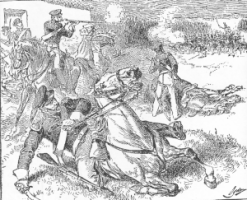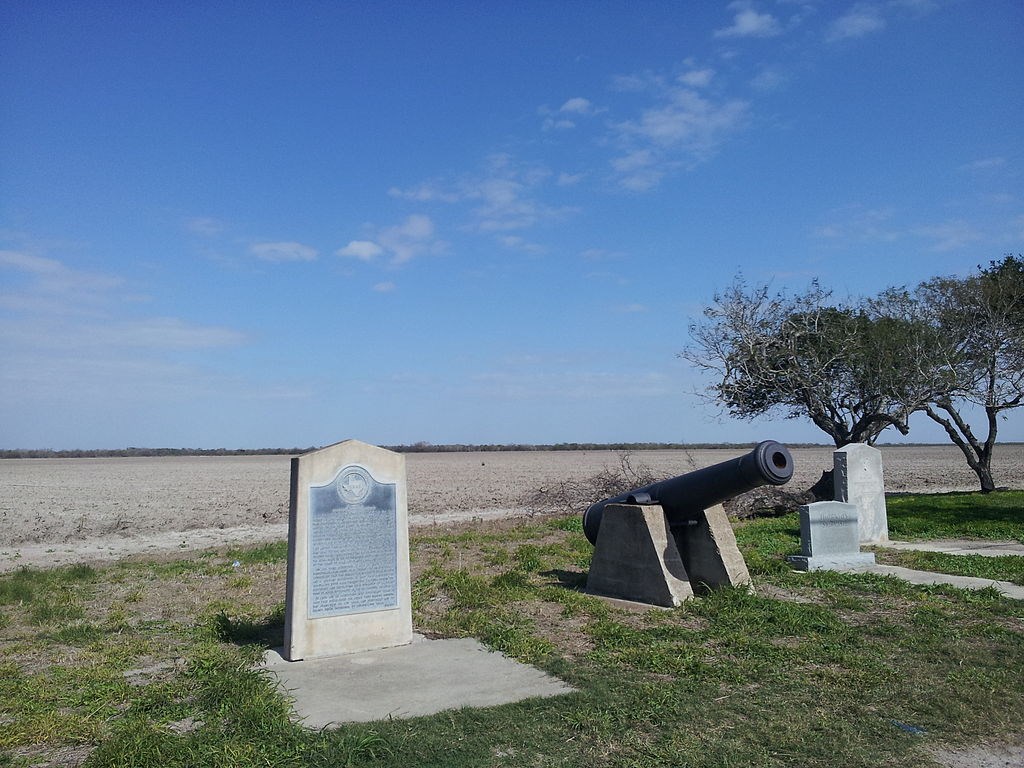By now, only the most gullible history students believe that the Mexican-American War was caused by a random confrontation between a detail of Zachary Taylor's Army of Occupation and Mexican forces on the north side of the Rio Grande.
From the beginning move by President James Polk when he ordered Taylor south from the Nueces River to the north bank of the Rio Grande to increase the pressure on the Mexican government to negotiate for the sale of California and the pushing of the Texas border to the Rio Grande, the strategy was one bent on creating a confrontation to justify the invasion into Mexican territory.

Taylor first met resistance from the Mexicans at the Arroyo Colorado when Mexican vaqueros said they would attack if his troops crossed the arroyo. Taylor pushed on and the vaqueros disappeared into the chaparral.
Then, on March 28, 1846, Taylor started constructing Ft. Texas directly across the river from Matamoros as Mexican officials and residents looked on from the opposite bank.
When Mexican officials protested, he answered by blockading the mouth of the Rio Grande and disrupting the flow of commerce and communications between Matamoros and New Orleans and Mexico City.
Later, Taylor sent raiding parties across the river to search for armed parties in Mexico and engage them. In one such engagement a Lt. Porter and one mare were killed.
It was on the 24th of April that Taylor finally got his wish. He sent Capt. Seth Thornton and 63 dragoons ostensibly on a reconnaissance mission to ascertain the crossing above river of a sizeable (1,600) Mexican force under the command of Gen. Anastacio Torrejon.
According to Capt. William Hardee, an officer in the detachment, he said Taylor's order to Thornton "as I understood them, were to ascertain if the enemy had crossed the river above our camp, and to reconnoiter his position and force."

Hardee said no mention was made in the official orders of confronting the enemy or engaging them in battle. However, Thorton seems to have been under other orders from Taylor.
Hardee notes in a letter he wrote to Taylor on April 26 as a prisoner of the Mexican forces in Matamoros two days after Thornton was ambushed, that on the 25th "all his inquiries along the way tended to the conviction that the enemy had crossed in strength."
About 23 miles from our camp (Rancho Carrizitos) our guide became so satisfied of this fact that he refused to go further and no entreaties on the part of Capt. Thornton could shake his resolution."
That guide was a spy named Chepita, a servant of Col. Henry L. Kinney, a contraband runner and founder of Corpus Christi, who tagged along with his employer who had signed on with the army to procure supplies for Taylor and provide the general with intelligence from behind enemy lines.
The result of Thornton disregarding Chepita's information – and Hardee's reason to be perplexed with his commander's decision to confront the enemy in apparent contradiction to his orders – was the capture of 46 U.S. soldiers, the death of seven dragoons, and the wounding of the rest. The survivors, like Hardee, were taken to be incarcerated in Matamoros by Mexican troops.

(Chepita's madre didn't raise no fool. He hightailed it back to Taylor when he saw the fool Thornton resolute in walking right into an enclosed ambush by more than 1,000 Mexican troops.)
When Taylor got word of the encounter, he mailed Polk a dispatch stating that "hostilities may now be considered as commenced."
Polk then announced to Congress and the world, " Mexico has passed the boundary of the United States, has invaded our territory and shed American blood upon the American soil."
On May 13, 1846, Congress declared war on Mexico, despite protests by the Mexican government. Mexico officially declared war on July 7 .





3 comments:
Sources, sources, sources. You were not there. Whose writing is this? Reads like plagiarism.
The US had designs on parts of Mexico that are now parts of the US. They tried buying and what that failed they tried the mordida route. When all else failed the ginned up a war to get what they wanted.
I suppose that should bother me but it does not. Acquiring land by conquest is as old as the human race. The Spanish did it and so did the Americans.
The Mexicans had it, but couldn't hold on to it. To the victor goes the spoils. We enjoy to this day the big block of land we sold from the Mexicans fair and square. If the Mexicans don't like it, "Come and take it".
American Blood on American Soil was the headline in NY Times. A vain effort to whip up war spirit in northern states.
Regardless of the Fake News New York Times, the northern USA gringo folks never supported this war.
They saw it for what it was. A pure Texan effort to have slaves, in support of other Southern states.
Public opinion was more divided than during Vietnam.
Don’t blame all gringos Juan. Just your brother Texans.
Post a Comment